The Bud Diary: Part 1: Introduction
The Bud Diary: Part 1: Introduction
I wrote some posts recently as introductions to the unusual branch structure of jujube trees — here and here — but these were pretty much informal segues not at all clear from the titles. So instead of continuing, I thought it best to backtrack a bit and do it properly, by starting at the beginning with the buds behind those branches.
For this is quite involved stuff! Not only do jujube trees have four different branch types, they also have two different bud types, each of two different vigours! (There is a third vigour again for a specific bud type.)
I was running out of time to find the perfect tree model, as we are well into bud-break and growth season now, and when a bud breaks and grows, it grows! I needed a tree only now waking up so as to catch the bud bursts as they happened.
Normally here, in mid-October, that would be a very long shot indeed. But this crazy super-fluctuating weather is affecting some trees more than others, and amazingly, some still are in that awakening state. In stark contrast to trees just one year older absolutely covered with almost fully developed flowers!
I did find my tree model, which not only has barely begun bud burst, but which also has a terminal bud barely beginning to burst. Perfect!
And here it is, yet another nondescript stick — this one a Li #2 — in a 190 mm pot, about 600 mm tall including the pot:

© Optimate Group Pty Ltd
And very much alive — here all three signs are clearly visible in this one photo: the deep mahogany flush, the green sap, and ‘the look’ just appearing in the terminal buds:
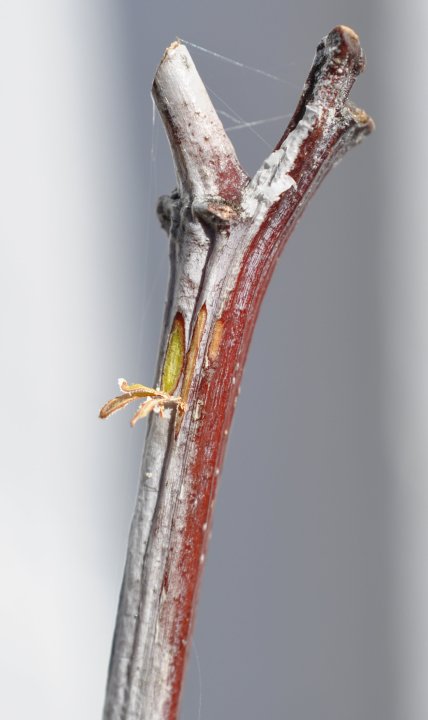
© Optimate Group Pty Ltd
(I’m now uploading new photos in higher resolution, so feel free to click on these to view more detail.)
Buds are typically located in regions called nodes. (Buds not in nodes are called adventitious buds but don’t concern us here.) Thus nodes are where branches, leaves and flowers ultimately arise. An internode is the section between nodes.
Some species have really distinct nodes — the thickened ring between bamboo stem segments is a node. (Making the bamboo stem segments internodes.) The nodes of other species can be much harder to find if there are no leaves or branches present.
Jujube tree nodes on younger wood appear as raised bumps which alternate along a branch, as seen on this Ta-Jan:
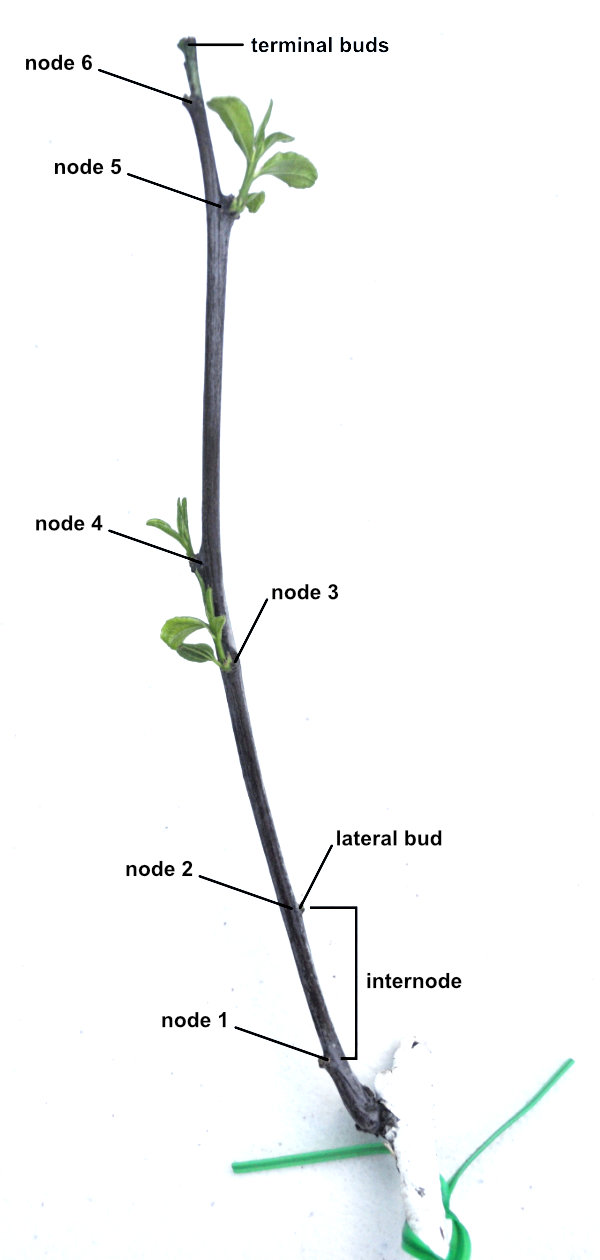
© Optimate Group Pty Ltd
Jujube tree nodes become more flush and blend in with older, thicker wood however:

© Optimate Group Pty Ltd
Below is a close-up of the above Li #2 trunk with nodes, an internode, and terminal buds marked. (The alternating black and white bands will help keep track of each node when photographing and referring to them.)
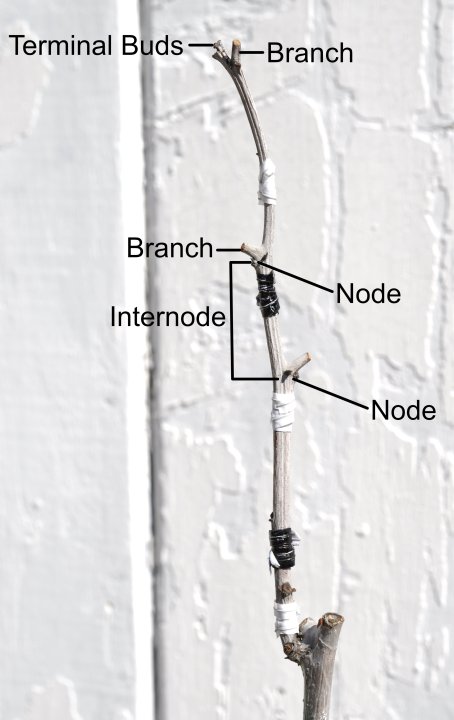
© Optimate Group Pty Ltd
As mentioned at the beginning, jujube trees have two different bud types in each node: a main bud and a secondary bud.
Here you can see these on this older Redlands:

Redlands branch node with a main bud, a secondary bud and two thorns
© Optimate Group Pty Ltd
And here is a good example on our little Li #2 — and caught just in time as that lower, secondary one has ‘the look’! This node is between the lowermost white and black bands on the trunk. Let’s call it Node 1.
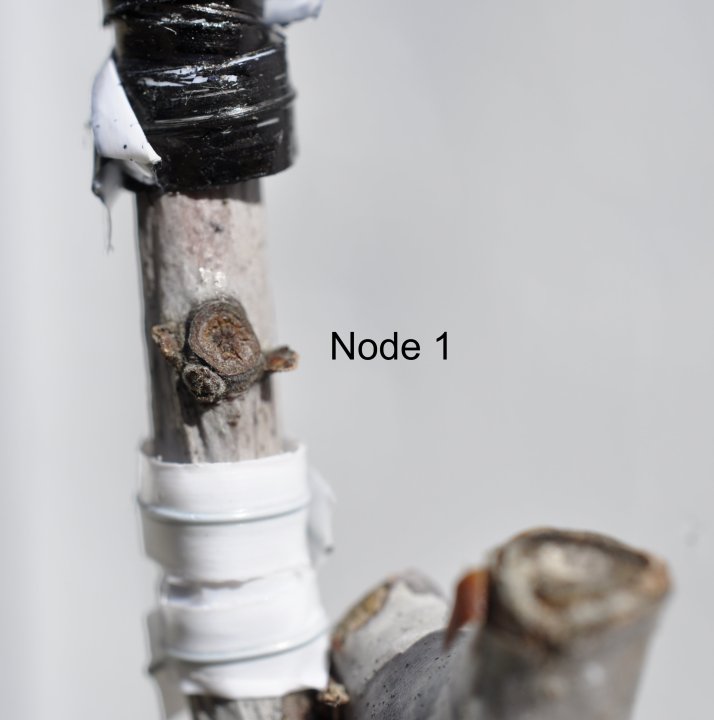
© Optimate Group Pty Ltd
Exactly the same thing at the node immediately above, and let’s call this Node 2:
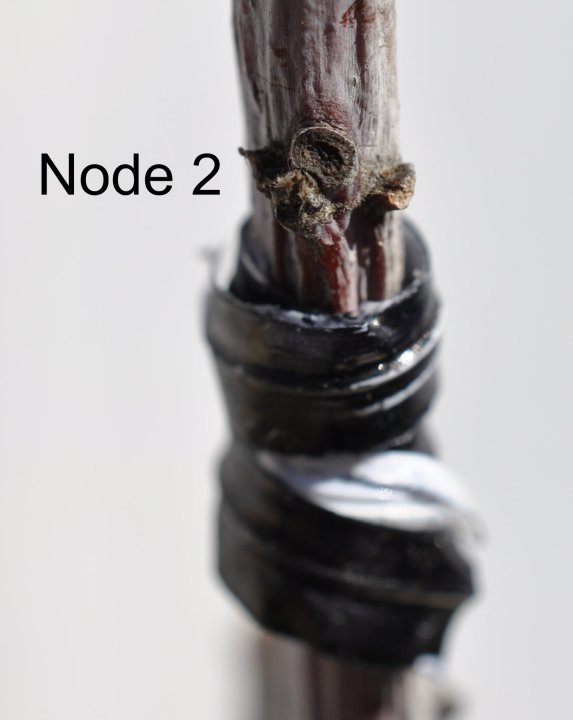
© Optimate Group Pty Ltd
The one immediately above Node 2 (Node 3) has the main bud with ‘the look’:
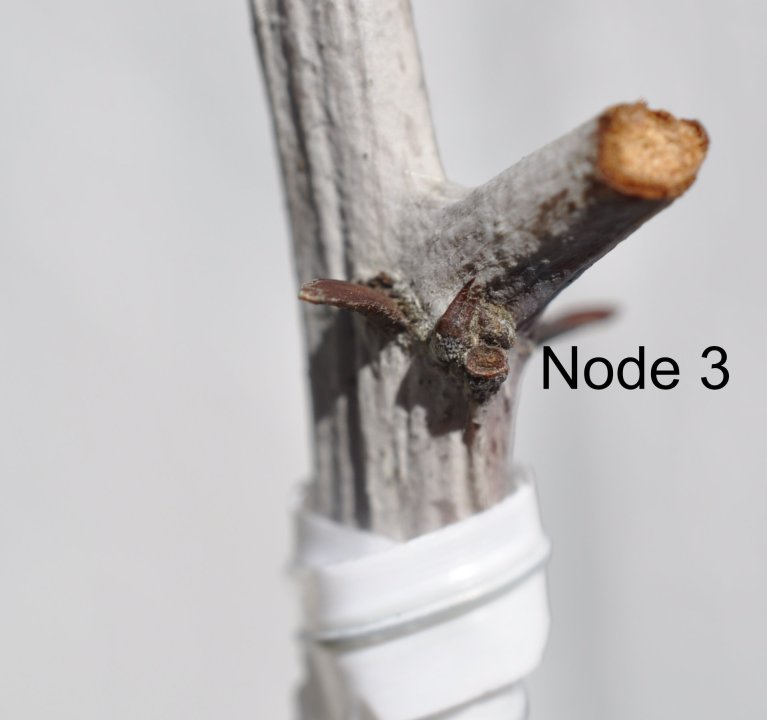
© Optimate Group Pty Ltd
As does Node 4:
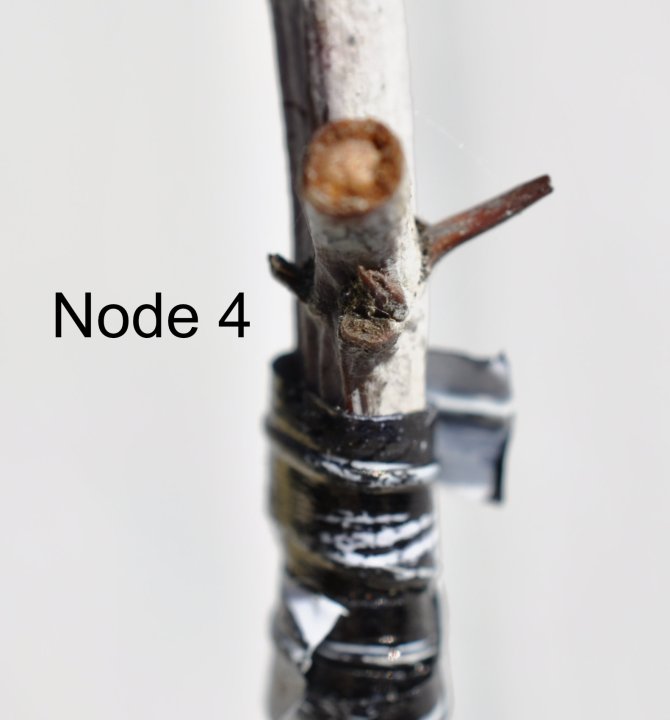
© Optimate Group Pty Ltd
Node 5 is interesting…
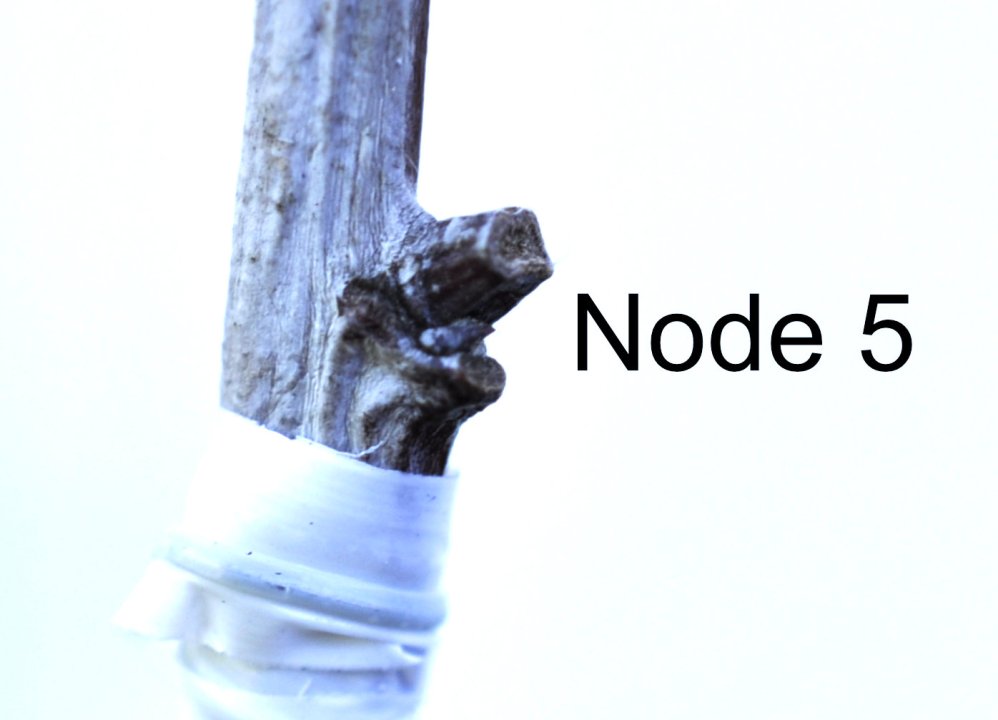
© Optimate Group Pty Ltd
And finally we have the terminal buds, just now showing signs of bud burst, from three different angles:
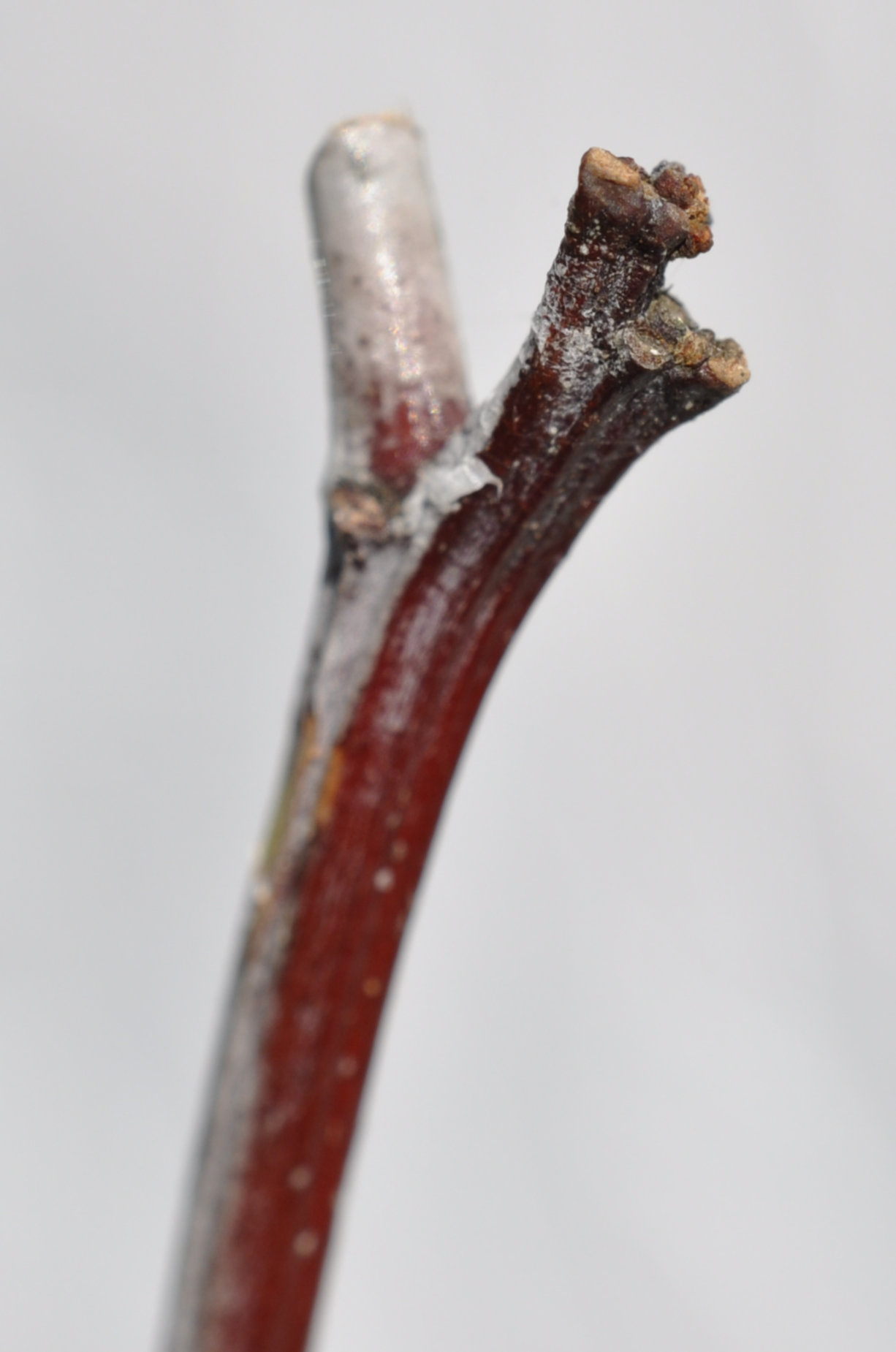
© Optimate Group Pty Ltd
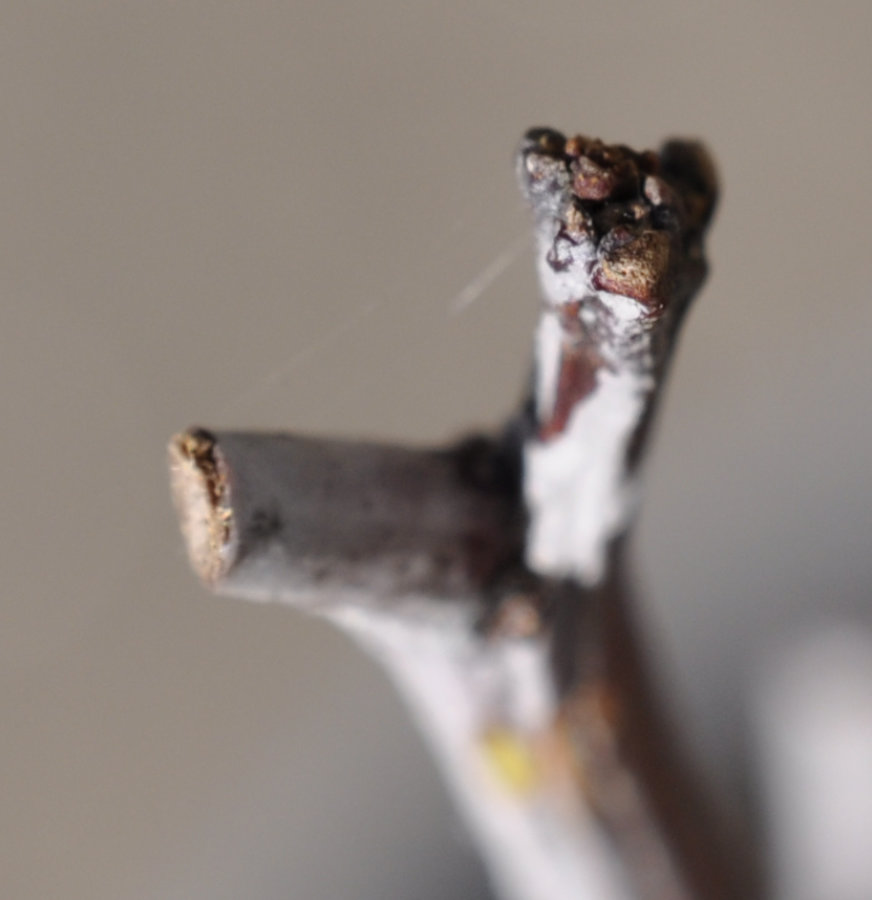
© Optimate Group Pty Ltd
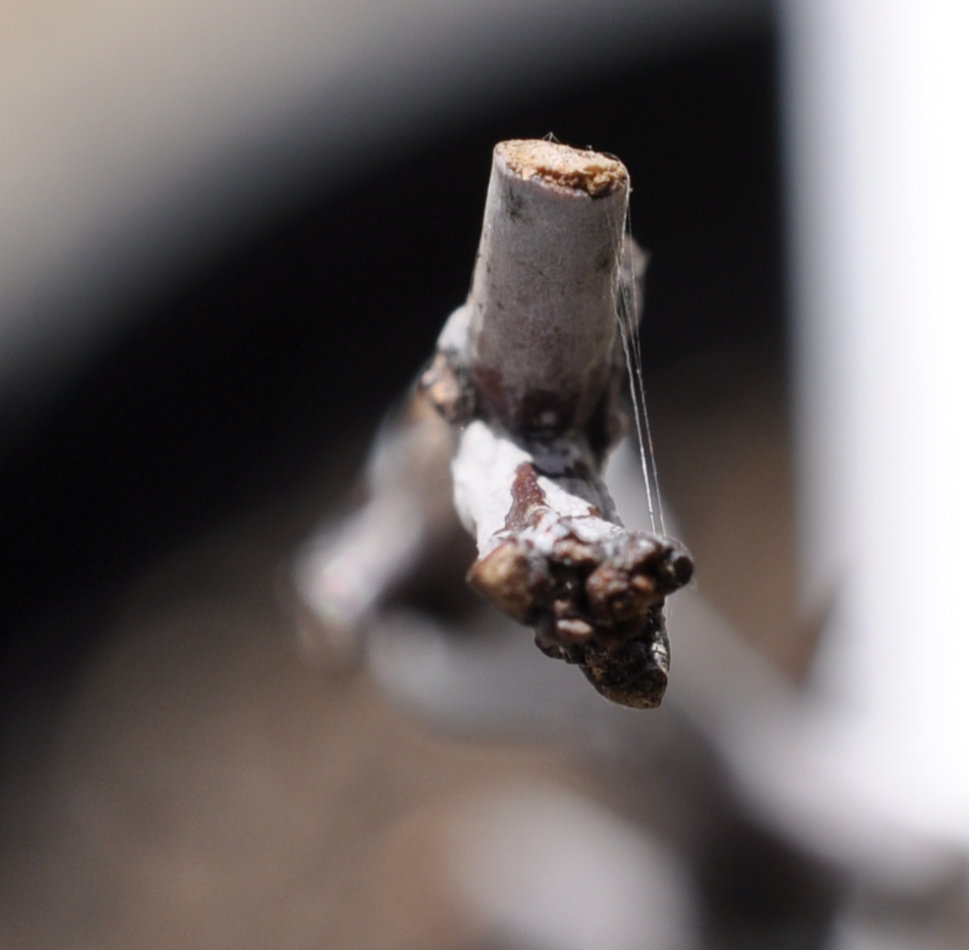
© Optimate Group Pty Ltd
These buds will have either strong or weak vigour, and this along with whether a main or secondary bud determines which branch type is produced.
And thus concludes this bud diary introduction — over to you now, little Li #2!
About the Author
BSc(Hons), U.Syd. - double major in biochemistry and microbiology, with honours in microbiology
PhD, U.Syd - soil microbiology
Stumbled into IT and publishing of all things.
Discovered jujube trees and realised that perhaps I should have been an agronomist...
So I combined all the above passions and interests into this website and its blog and manuals, on which I write about botany, soil chemistry, soil microbiology and biochemistry - and yes, jujubes too!
Please help me buy a plant if you found this article interesting or useful!